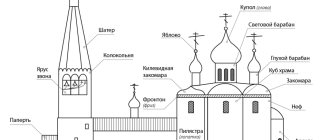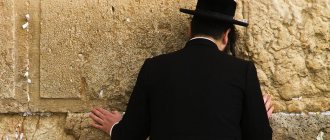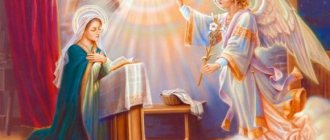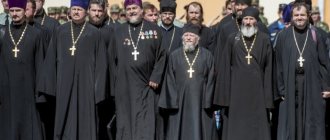Monastery - what is it?
First, it’s worth figuring out where the monks live. The term “monastery” came into our language from Greek. This word means "alone, lonely" and is used to refer to communities or people who choose to be alone. A monastery is a religious gathering of people who have taken a vow of celibacy and withdrawn from society.
Traditionally, the monastery has a complex of buildings, which includes church, utility and residential premises. They are used depending on the needs of the community. Also, each monastery determines its own charter, which all members of the religious community must follow.
Today, several types of monasteries have survived in which monastic life can take place. The Lavra is a large monastery that is part of the Orthodox Church. Kinovia is a Christian community that has a community charter. An abbey is a Catholic church that is subordinate to a bishop or even directly to the pope. There are also monastic villages called deserts, which are located far from the main monastery.
Monasticism is not just going to a monastery, but a way of life with restrictions and vows
It’s not enough to go to a monastery. This is only the first step with which monasticism begins. Much more important are the restrictions that a person voluntarily accepts. These are the vows:
Vow of virginity (chastity). The idea here is to snatch a person from the various blessings of the world, its temptations and pleasant sides. They are believed to distract from the spiritual. And the intimate sphere has the strongest lever of influence on a person.
But making a vow is one thing, but keeping it throughout your life is another. It is difficult to find similar statistics about Orthodox monks, but medieval Catholic monks were often caught breaking the vow of chastity, but went unpunished.
If something like this were to come to light today, the monk could face expulsion from the monastery. In order to prevent such cases from occurring, strict prohibitions have been introduced on the presence of women in the men's monastery.
Vow of obedience . Obedience is a situation where a student obeys the senior monk to whom he is assigned. A person may well have several obediences at once. This is a standard situation. At the same time, obedience must be with reasoning. No one should listen to an elder if he incites him to commit criminal or immoral acts. This applies to any area.
An Orthodox monastery is a religious community of monks or nuns that has a single charter, as well as a single complex of liturgical, residential, and utility buildings belonging to it
Even monks are capable of making mistakes. If the demands of an elder differ, for example, from the instructions of the holy fathers, attention should be drawn to this and senior management should be notified. The question of the mentor's competence needs to be raised.
But in general, controversial situations are rare, and therefore ideologically obedience is understood as absolute.
Vow of non-covetousness . This is the abandonment of personal property. Even a monastery icon painter does not use his own tools, but those that are owned by the monastery. You cannot go to a monastery, become a monk and still own a three-story country house. Monasticism is a serious step. It is not made in such a way that there is somewhere to return.
This requirement often led to problems. For example, there is a well-known case of the involuntary nun Margarita Delamar, who was not allowed to receive her due inheritance and return to the world because she gave a meal of non-covetousness. Although it is known that the real reason was not this, but the intrigues woven against her.
Historical reference
Knowing the history of the origin of monasteries will help you better understand who the monks are. Nowadays, monasteries can be found in many countries of the world. It is believed that they began to appear since the spread of Christianity, which happened in the third century AD. The first monks were people who left cities into the wilderness and led the life of ascetics; then they were called hermits. Egypt is the birthplace of monasticism; it was in this country that the first cenobia appeared in the 4th century thanks to Pachomius the Great.
Soon after this, monasteries arose first in Palestine and then in European countries. The first monastic communities in the West were created through the efforts of Athanasius the Great. The fathers of the Kiev-Pechersk Lavra in Rus' were Anthony and Theodosius of Pechersk.
In the Dictionary of Synonyms
monk, cell-attendant, hermit, novice, tonsure, hermitage, stylite, elder, schema-monk, monk, monk, silent person; nun, nun, cell attendant, hermit, novice, old woman, blueberry, blueberry; angelic (rank, image), clergy; ascetic; brother, abbot, fakir, Bernardine, monk, recluse, Carthusian, klobuchnik, Augustinian, dervish, Shvetambar, host, tonsured, Benedictine, bhikkhu, Premonstrant, anchorite, canon, priest, abbot, cellarer, lama, marabout, Capuchin, Black Hundred, holy father, monk, father, schema-archimandrite, monk, schemamonk, carmelite, hieromonk, hieroschemamonk, ascetic, shakya, bonze
Who are monks: general information
It's time to get to the fun part. Who are monks is a question that fascinates many people. This is the name given to those who voluntarily rejected worldly joys and devoted their lives to worship. Monasticism is a calling, not a choice; it is not surprising that only a select few become monks, while everyone else leaves the monastery walls.
Becoming a monk is available not only to men, but also to women. The latter can also settle in a monastery after making the necessary vows. There were times when there were no monasteries or monasteries. This practice was introduced in 1504, it was then that joint monasteries were abolished in Rus'.
Sources
- Brethren // Encyclopedic Dictionary of Brockhaus and Efron: in 86 volumes (82 volumes and 4 additional). - St. Petersburg, 1890-1907.
- [www.atamanhotel.com/rs/dervishes.html Ataman Hotel – WHIRKING DERVISHES]
- The Oxford English Dictionary, vol X, page 599.
- D. Mead. Theosophical Dictionary.
- Hellmuth Hecker, [www.accesstoinsight.org/lib/authors/hecker/wheel273.html#n-30].
- [www.youtube.com/watch?v=TpoO8denVYM Geshema Degree Passes CTA Approval]. VOAKunleng. Retrieved March 4, 2013.
Life of monks
The above describes who the monks are. What kind of life do people lead who have followed their calling and dedicated themselves to God? To be tonsured does not mean that a person ends life on earth. It continues to satisfy the need for sleep and food. Of course, each monk has his own duties, working for the benefit of people or the monastery, which is called obedience.
Obedience is the work that the inhabitants of the monastery do when they are free from worship. It is divided into economic and educational. By economic work we mean that which is aimed at maintaining order in the monastery. What kind of work the monk does is decided by the abbot. Educational work is prayers.
Every minute of such a person is devoted to the service of God. He is not bothered by earthly goals and ideals. The monk’s day is spent in prayers, which become for him a kind of meaning of life.
Vows
It's no secret that monks take vows. What is the monastic vow of celibacy? A person who makes such a promise not only gives up the opportunity to get married. This vow implies that gender no longer matters to him. The bodily shell remained in the world that the monk left; from now on, only souls are important to him.
Also, a servant of God must take a vow of non-covetousness. By saying goodbye to the world, the monk also renounces the right to personal property. This implies that he cannot own anything, even a ballpoint pen. A person gives up property because he no longer needs it. Everything that the monks use, such as books, is the property of the monastery.
What is the monastic vow of obedience? This means that a person completely rejects his desires. His only goal from now on is unity with the Lord, to whom he offers prayers hourly. However, willpower remains with him. In addition, the monk is required to unquestioningly follow the orders of the abbot. This is not a sign of submission and servility, but rather helps to find peace and joy in the soul.
Degrees of monasticism
The monastic path has several degrees, but speaking in the most general terms, there are three stages (if not two):
- Preparation (worker, novice)
- Monasticism
- Schema monasticism (more correctly - schema)
Preparation for monasticism can last for several years - there have been cases when a person remained a novice almost his entire life.
Consecration as a monk occurs only when the abbot of the monastery is unconditionally convinced that monasticism is truly a calling for this person, and not his emotional or situational choice. There will be no turning back: returning “to the world” is tantamount, so to speak, to suicide.
The abbot needs a lot of experience and spiritual wisdom to understand whether the moment has come for tonsure or whether he needs to wait a little longer and “check” the person. At the same time, the novice, of course, can be sure that he was created for monasticism, but years will pass, the initial spiritual “ardor” will subside, and life in the monastery will become for him not liberation from the world, but grief.
To be tonsured into the schema is the highest degree of monasticism—“equal to the angels.” It implies that the monk is freed from all external obediences (in other words, he goes “in seclusion”, although for this he need not be a schemamonk), and his only and unceasing activity becomes prayer. In the Russian tradition, as a rule, the oldest monks are tonsured into the schema.
photo (c): orthodoxmartyria.blogspot.ru
How to become a monk
Becoming a monk is a long journey that not every applicant succeeds in completing. Many people realize that they are not able to part with the benefits of civilization, to give up the opportunity to have a family and property. The road to becoming a servant of God begins with communication with a spiritual father, who gives useful advice to a person who has decided to say goodbye to worldly life.
Next, the applicant, if he has not yet abandoned his intention, becomes a laborer - an assistant to the clergy. He must constantly be in the monastery and follow its rules. This gives a person the opportunity to understand whether he is ready to spend his life in prayer and physical labor, say goodbye to the benefits of civilization, and rarely see his family. On average, a future monk follows the path of a laborer for about three years, after which he becomes a novice. The duration of this stage is determined individually; a person is still free to leave the monastery walls at any time. If he passes all the tests with honor, he will be tonsured a monk.
About the ranks
Residents of our country are accustomed to calling the clergyman “priest.” This common word is acceptable, but you need to know that in the Orthodox Church there is a strict hierarchy of orders. To begin with, it is worth mentioning that all clergy are divided into black (taking a vow of celibacy) and white (having the right to start a family).
Only four Orthodox ranks are available to married people: deacon, protodeacon, priest and archpriest. Many people prefer this path because they do not want to completely abandon worldly life. What kind of monastic rank can a person who decides to do this receive? There are many more options: hierodeacon, archdeacon, hieromonk, abbot, archimandrite and so on. A monk can also become a bishop, archbishop, metropolitan, or patriarch.
The highest monastic rank is patriarch. Only a person who has taken a vow of celibacy can be awarded it. There are cases when family clergy, whose children have already grown up, with the consent of their spouses, go to a monastery and renounce worldly life. It happens that their wives do the same, as evidenced by the example of Saints Fevronia and Peter of Murom.
Cloth
The clothing of the monks also arouses keen interest among the public. A cassock is a long robe that reaches to the heels. It has narrow sleeves and the collar is buttoned tightly. The cassock is an undergarment. If worn by a monk, the item should be black. Cassocks of other colors (gray, brown, white, dark blue) can only be afforded by family clergy. Traditionally, they are made from wool, cloth, satin, and linen.
Of course, the clothing of monks is not only a cassock. The outer garment of a person who has dedicated himself to God is called a cassock. Traditionally, it has long and wide sleeves. Black cassocks are most widespread, but you can also find white, cream, gray, and brown versions.
It is impossible not to mention the monastic headdress - the hood. It appeared in the church environment a long time ago, initially it looked like a soft cap made of simple matter. The modern cap is covered with a black veil that extends below the shoulders. Most often you can find black hoods, but there are also products made in other colors.










